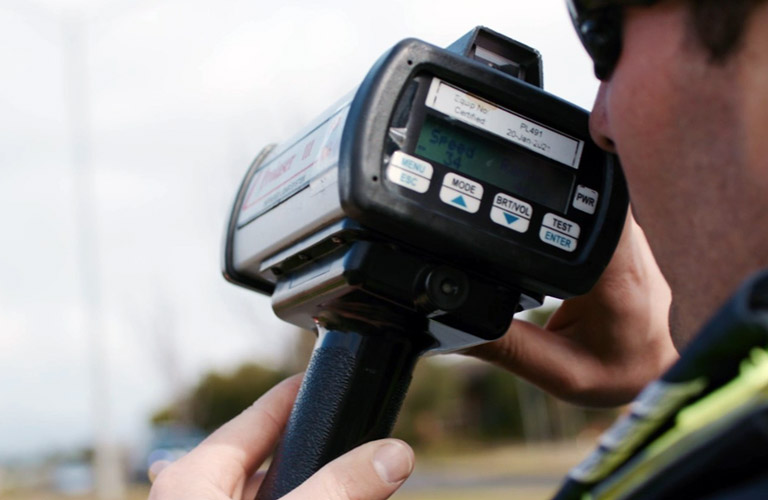The facts
- Speed, both excessive speed and inappropriate speed for the conditions, remains one of the key factors in fatal and serious injury crashes on our roads, and was a likely contributing factor in one-in-four fatal crashes in the last five years.
- Every km/h over matters: exceeding the speed limit by 3km/h is associated with a 25 per cent increase in crash risk. At 5 km/h over the limit, crash risk increases by close to 50 per cent.
- Drivers travelling at 65km/h in a 60km/h zone double their risk of being in a crash. The risk increases even more at higher speeds.
- In ideal conditions, a modern car travelling at 65km/h will take around 40 metres to stop and will still be moving at around to 30km/h. That’s similar to the forces experienced falling from the first floor of a building.
Staying safe when driving
- Driving within the speed limit can reduce the severity of injury in a crash and can mean the difference between death, serious injury or no crash at all.
- Make sure you drive to the conditions – this includes but is not limited to reducing your speed on narrow roads, in wet or icy conditions, and when there is poor visibility.
- Don’t feel pressured to drive above the posted speed limit if someone is driving close behind you.
- Saving time because you’re running late is often given as a reason for speeding. In reality speeding does not save you much time. For example, on an average 10 km trip, travelling at 65 km/h instead of 60 km/h will only save you 46 seconds, at best – providing you do not encounter traffic, changed road conditions, intersections or roundabouts etc. At higher speeds, the time savings are even less. On an average 10 km trip, travelling at 85 km/h instead of 80 km/h, would only save you 26 seconds, again, at best.
- When driving in heavy traffic and busy areas, be extra careful and look out for other road users, especially pedestrians, cyclists and children.
Speed enforcement
Saving lives through speed enforcement
Victoria’s road safety camera system plays a critical role in reducing the number of lives lost on our roads.
Speed cameras are one of the most effective tools in the fight against deaths and injuries from collisions. There are three types of speed camera systems – fixed, mobile and point to point.
- Mobile speed cameras can be located in response to high-risk areas for road trauma, excessive speed complaints or identified areas where speeding is an issue to enforce speed limits.
- Fixed safety cameras are placed at signalised intersections and can detect both speed and red-light offences.
- A point-to-point camera system is used on a highway and it measures average speeds over distance.
Road safety cameras are only one tool. Victoria Police carry out speed enforcement measures using mobile radar laser equipment, high-visibility patrol cars and unmarked vehicles patrol streets, roads and highways to enforce speed limits and help save lives.
Find out more about camera enforcement or police enforcement .
Speed camera locations
Each fixed road safety camera location in Victoria can be viewed on the Cameras Save Lives website
Mobile road safety cameras are used in unmarked vehicles and rotated through locations assessed and approved by specialist traffic police.
Further information about road safety cameras can be found on the Cameras Save Lives website
What we are doing about speeding
- The TAC supports road safety cameras as they have proven to be one of the most effective ways to get drivers to slow down and ultimately save lives. There has been a 47 per cent reduction in crashes resulting in death or injury at intersections with safety cameras. Find out more about road safety cameras
- Combating speed through enforcement and education is a priority of the Victorian Government’s Road Safety Strategy 2021-2030, which aims to halve road trauma in the state by the end of the decade. The strategy’s action plan has seen a 75 per cent increase in mobile camera hours and will see 35 additional speed and red-light cameras installed at high-risk intersections to further deter people from speeding.
- The TAC works with local government areas to support campaigns to reduce speed. Find out more about TAC grants
Related content
